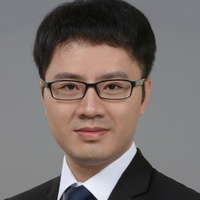"I had a strong interest in physics ever since I was a child, hoping to understand how the universe works. After
graduating from high school, I did my undergraduate study in the Department of
Physics at the University of Science and Technology of China," Xu Zhang recalled.
The tranquil campus provided Xu Zhang with a comprehensive learning environment, allowing him to enjoy studying. Inspired
by Professor Zeng Changgan, he became interested in the field of atomically thin
two-dimensional (2D) semiconductors and gradually realized related scientific
research could expand and disrupt the existing silicon-based semiconductor
industry.
Upon graduation, Xu Zhang joined
Massachusetts Institute of Technology (MIT) for his PhD study under the supervision
of Professor Mildred Dresselhaus and Professor Tomas Palacios. Cultivated by
the MIT's highly innovative environment, Xu Zhang set a goal of developing
valuable technologies that could benefit society.
Xu Zhang 's research focuses on exploring
atomically thin 2D crystal materials, digging into its excellent semiconducting
properties, and looking for new opportunities for the chip industry in the Post-Moore
era.
He and his team successfully designed and
manufactured a high-frequency integrated circuit based on atomically thin 2D
crystals, which might be a breakthrough beyond the traditional silicon-based
chip designs.
"[2D crystals] as a newly emerging
cutting-edge material, still have a lot of gaps in the understanding of their
physical properties." Xu Zhang said.
Therefore, he used an electron cyclotron
resonance plasma-based approach to develop a non-intrusive surface
functionalization method for 2D materials. In such a system, a large amount of
charge transfer occurs while the sp2 planar nature of graphene and
its ultrahigh mobility can be maintained. For the first time, Zhang unveiled
many unique features of 2D materials that are distinct from conventional 3D
electronic ones, which shows both practical and scientific significance.
In recent years, Xu Zhang's other
achievement is developing a high-frequency flexible rectenna. He first proposed
an innovative device configuration based on a 2D semiconducting-metallic-phase
heterojunction, which can significantly reduce parasitic capacitance and series
resistance. Such configuration sets a new record of the cutoff frequency and
allowed the rectenna to cover Wi-Fi, Bluetooth, and most of the mobile communication
bands, including 5G.
This breakthrough technology is expected to
transform and upgrade the current network infrastructure, such as Wi-Fi, into
potential energy hotspots, providing energy solutions for IoT devices. It has
huge application potential in wearable devices, flexible electronics, and the IoT
industry.
The emphasis on disruptive technology also
determines the direction of Xu Zhang's future research. He is currently an Assistant
Professor (tenure-track) in the Department of Electrical and Computer
Engineering at Carnegie Mellon University. He will focus on combining
ultra-low-power smart chips based on 2D materials and high-frequency wireless
energy harvesting technologies to develop distributed sensors that may not
require batteries at all.
Xu Zhang believes that the semiconductor
field is undergoing an important period of change as many ideas are brand new.
In the process of upgrading from the mobile Internet to the Internet of Things,
the semiconductor industry will play a key role. There are lots of exciting opportunities.




